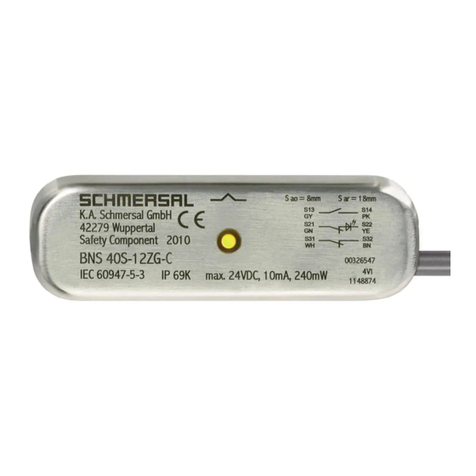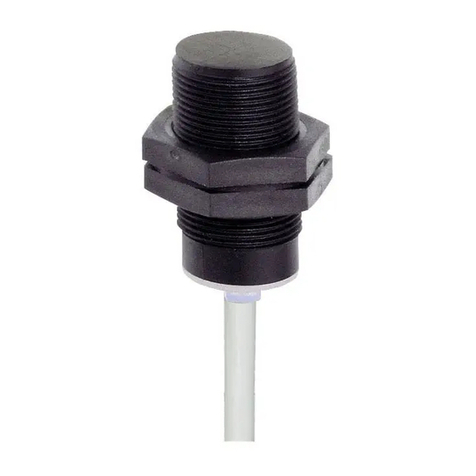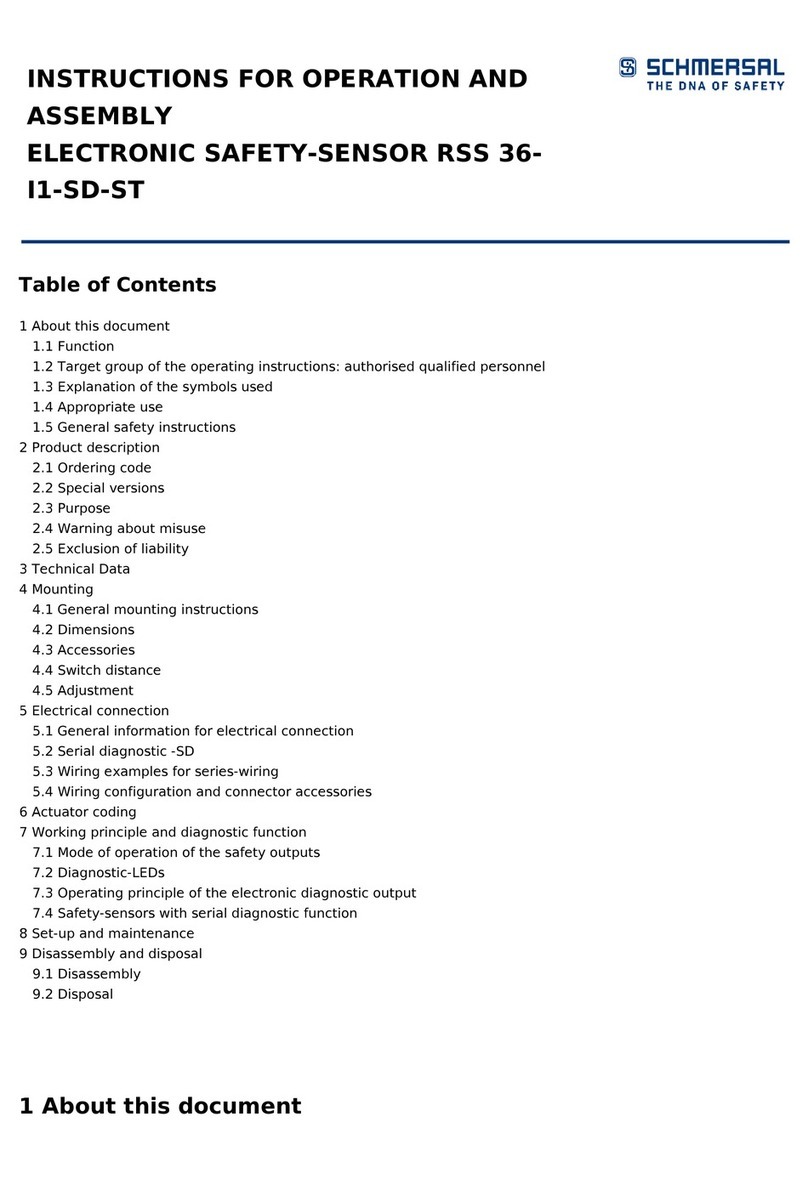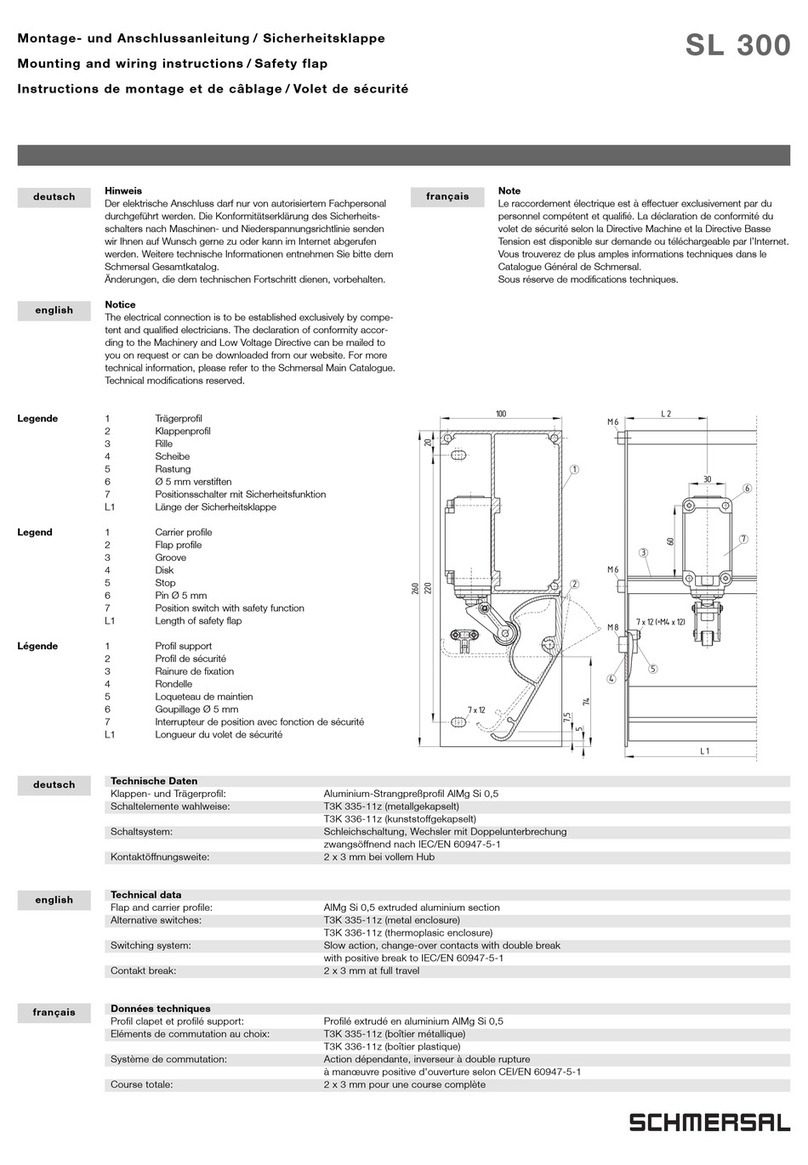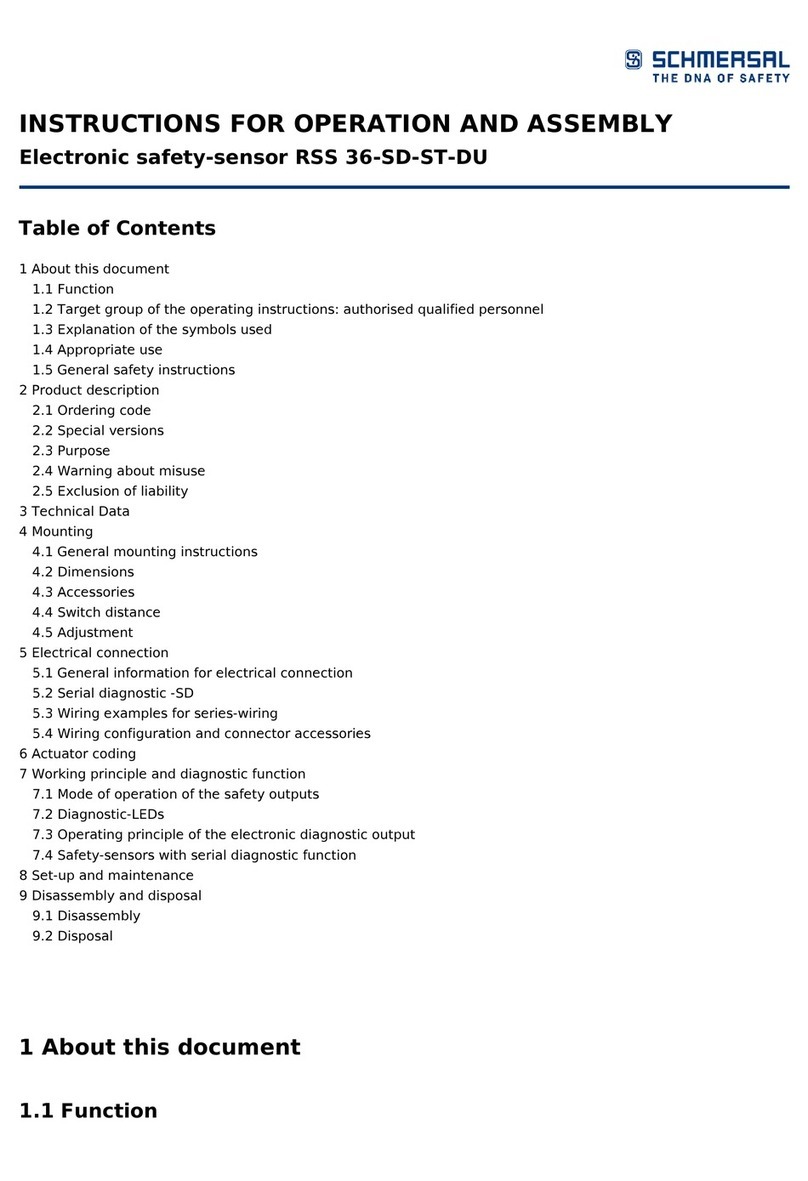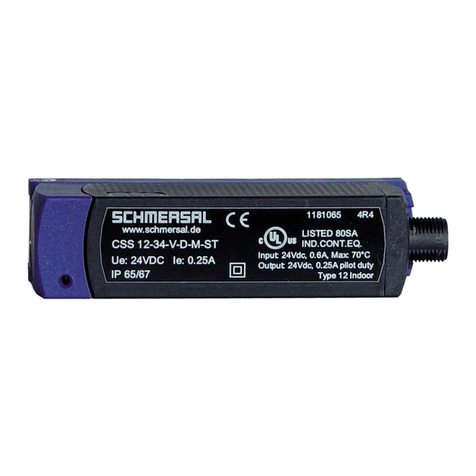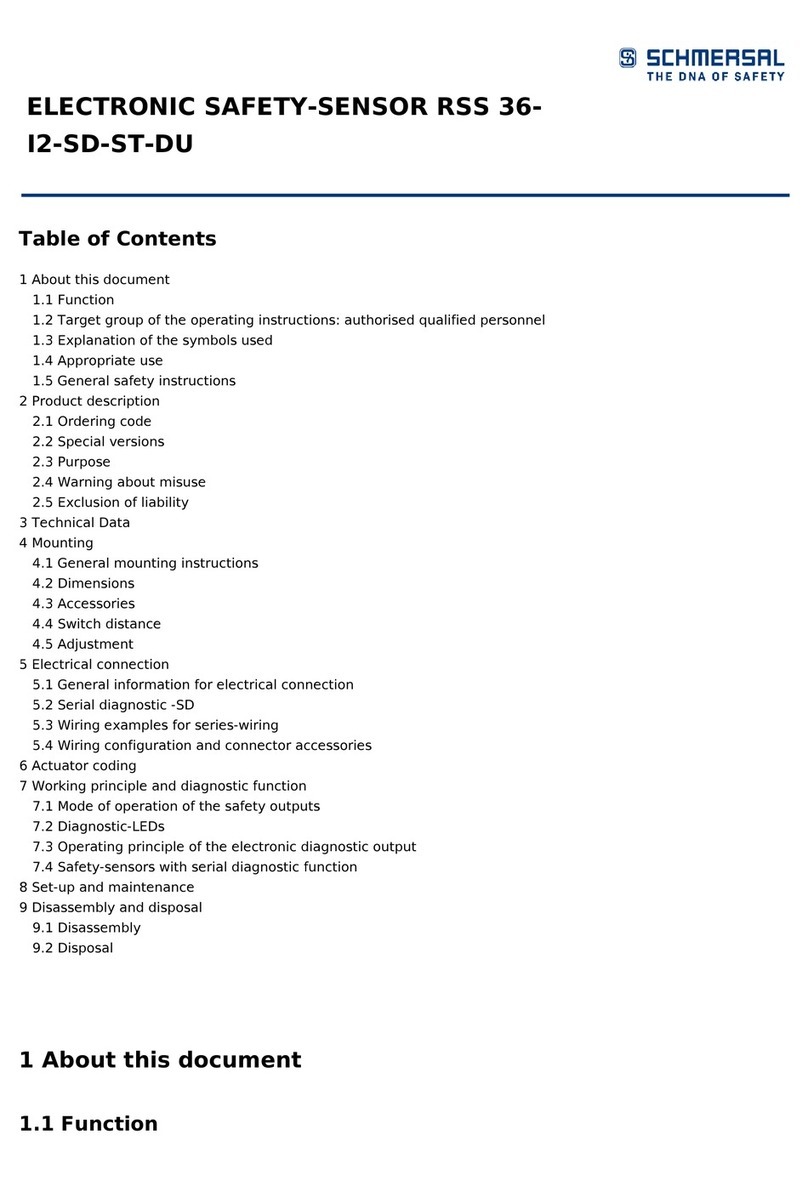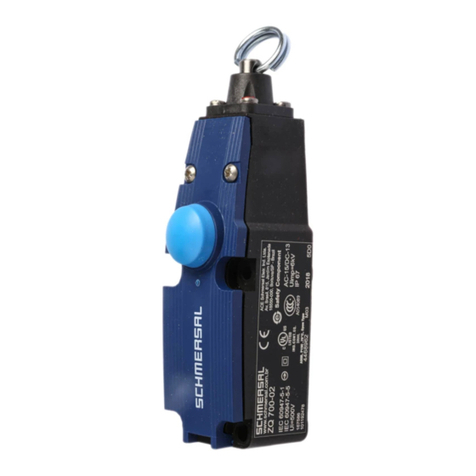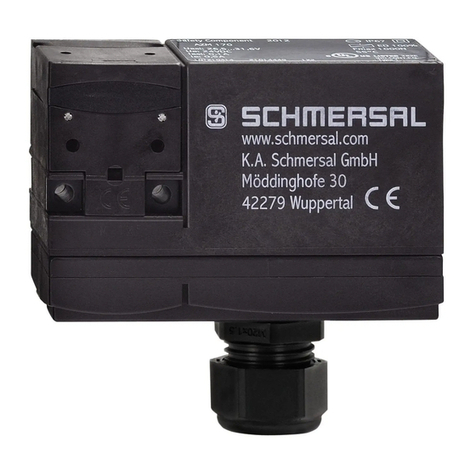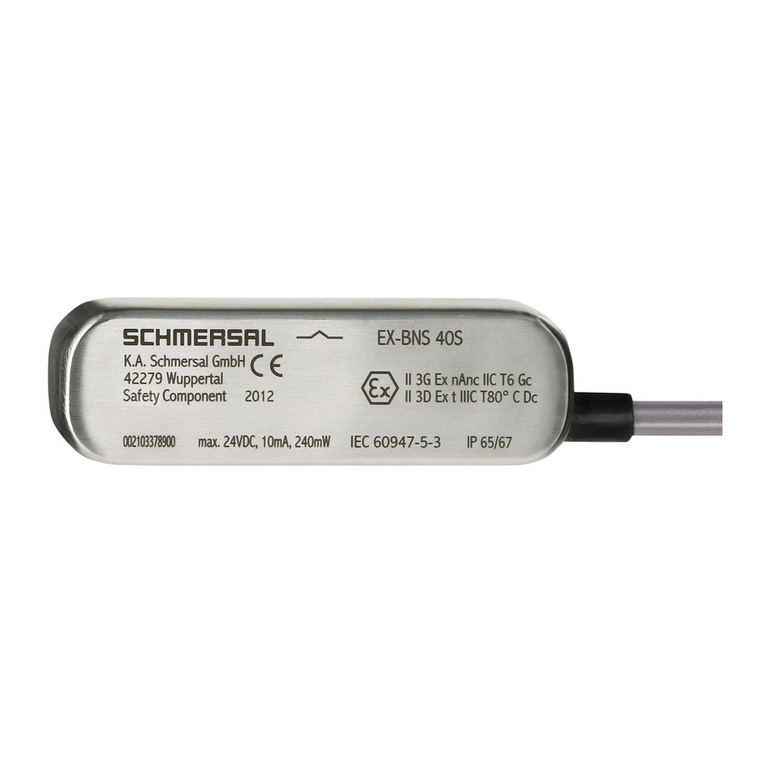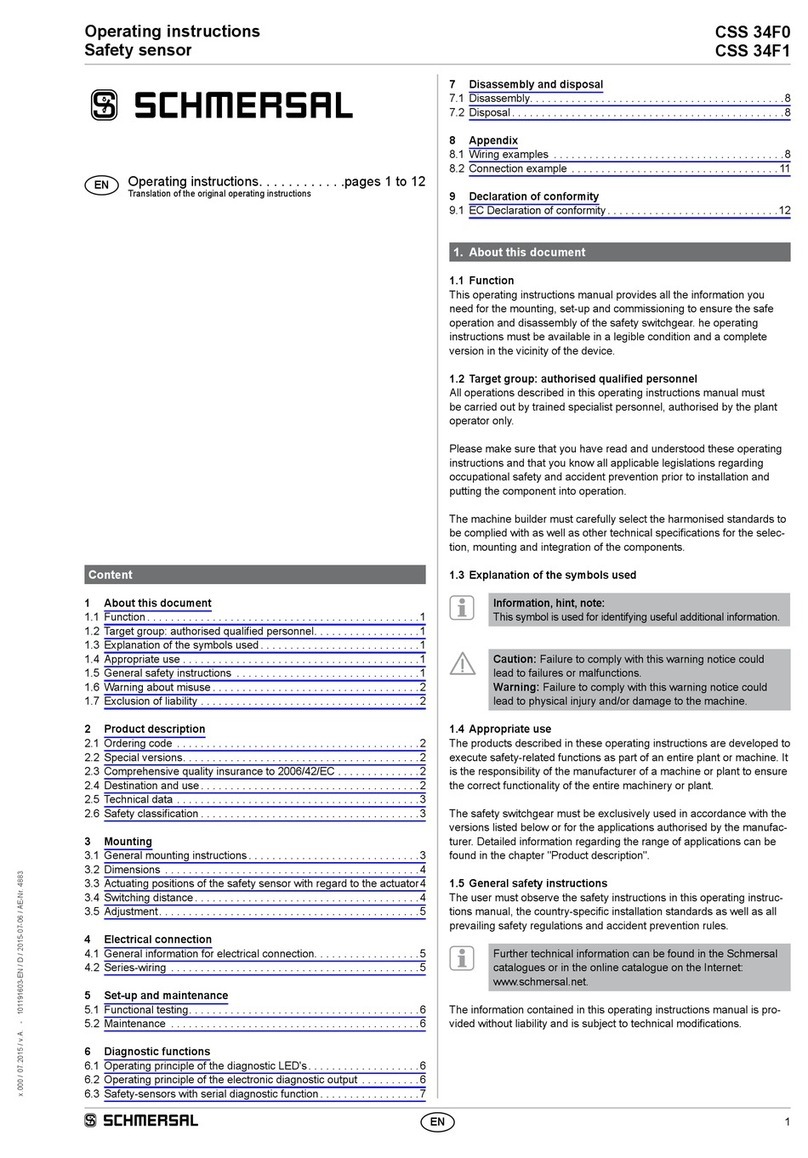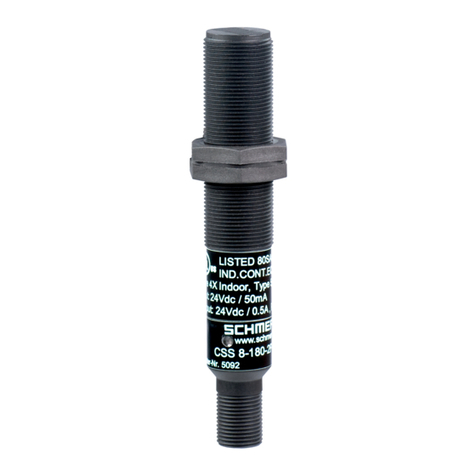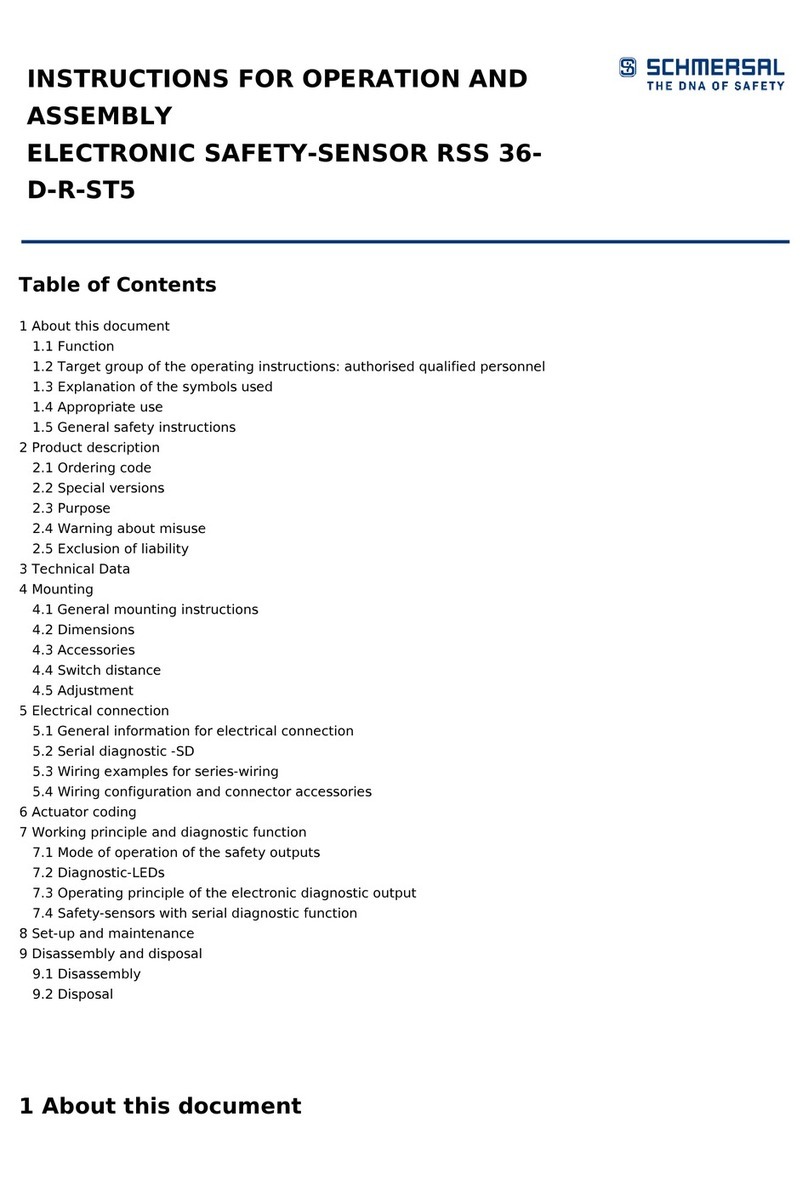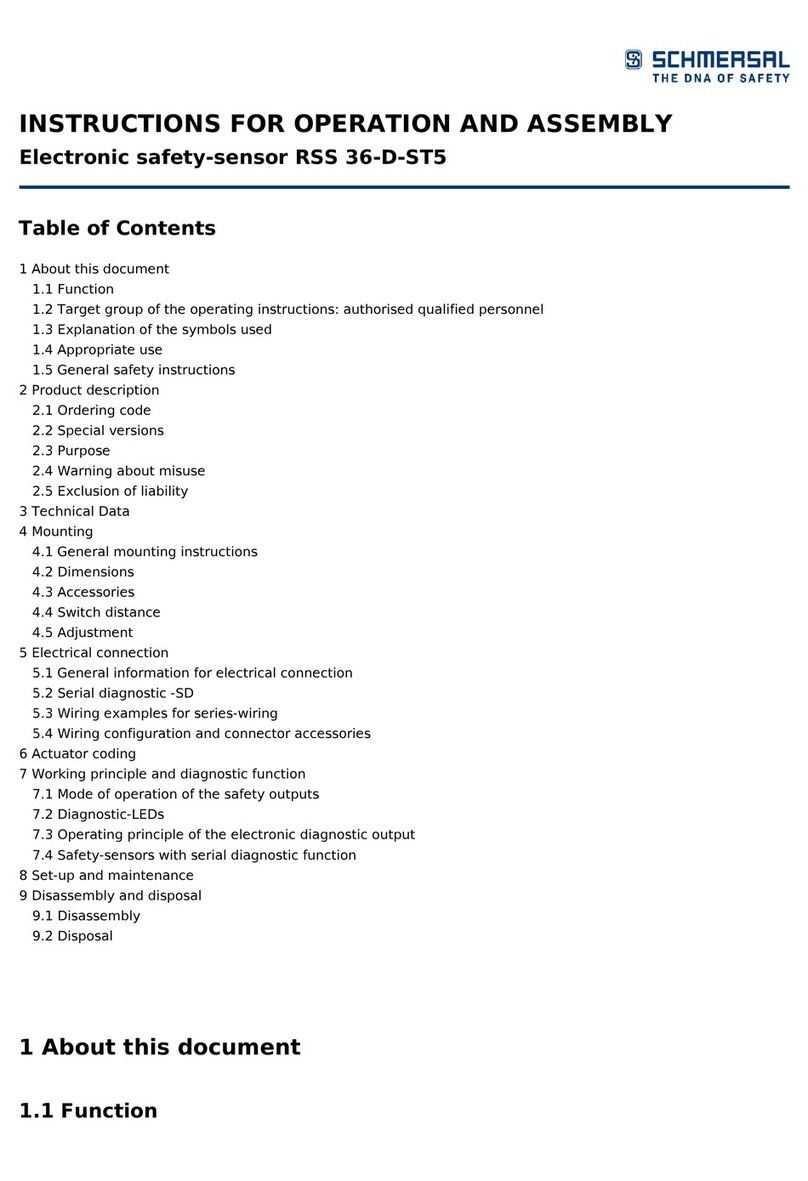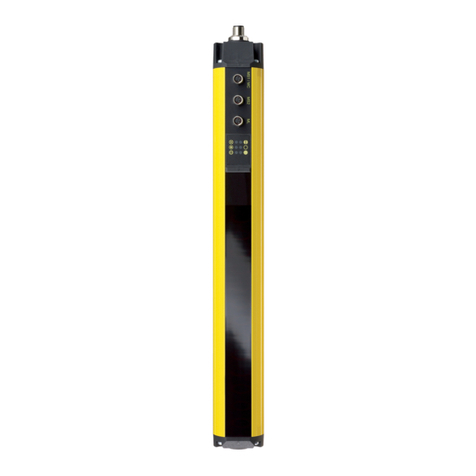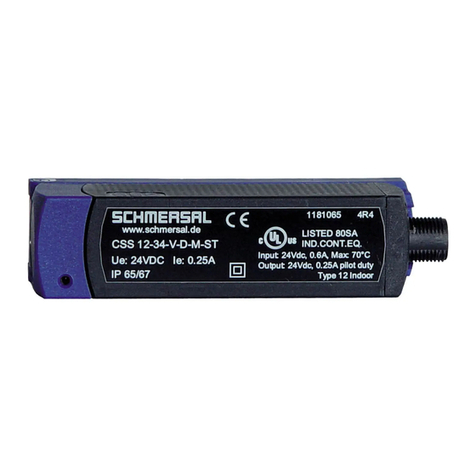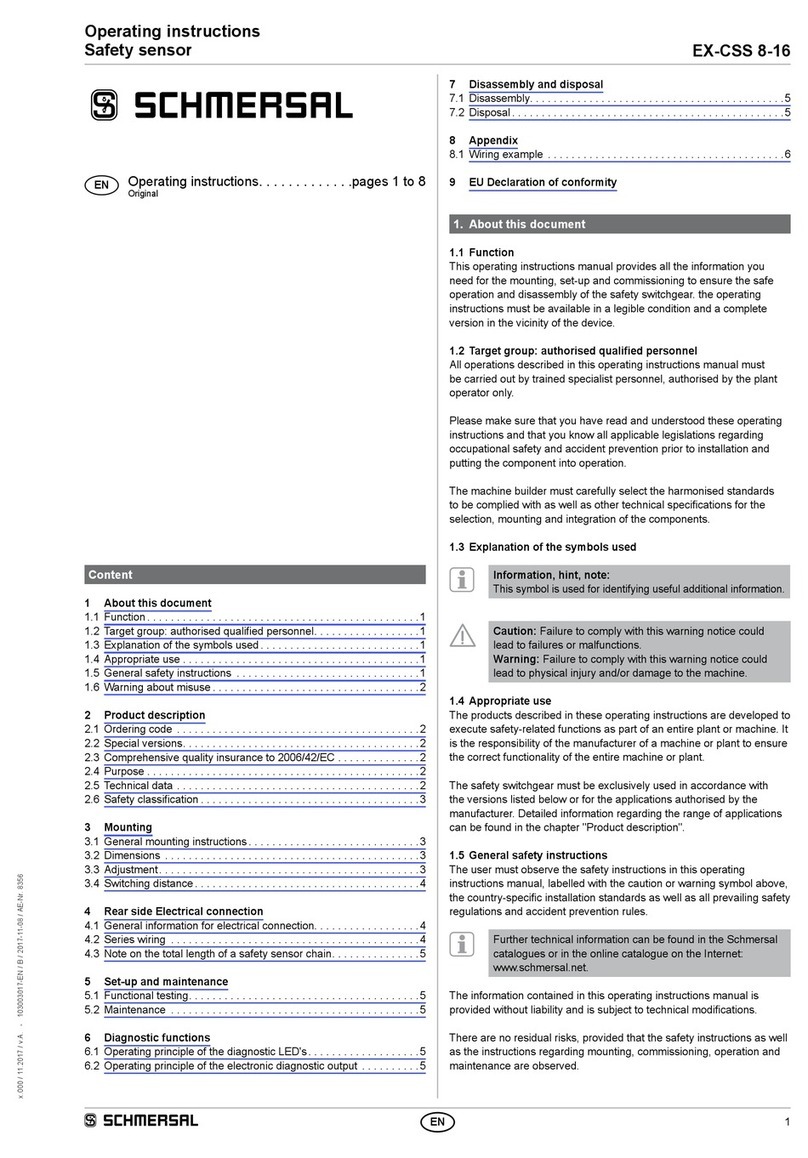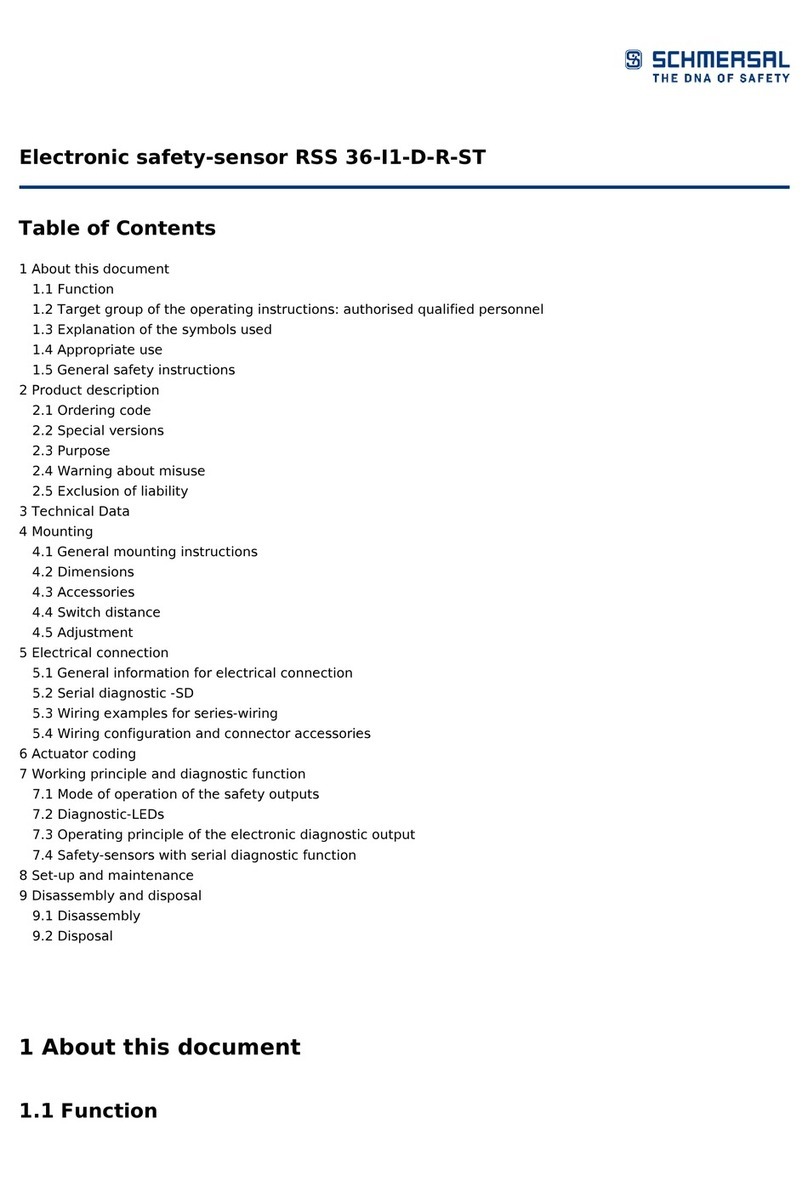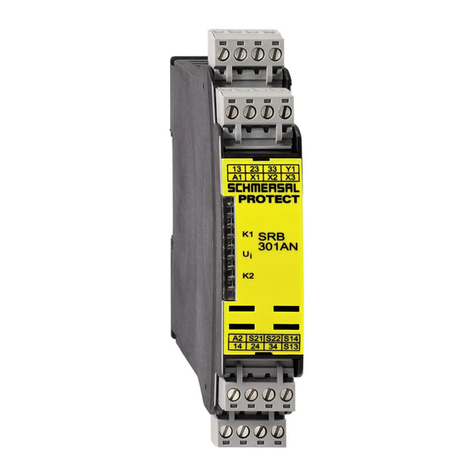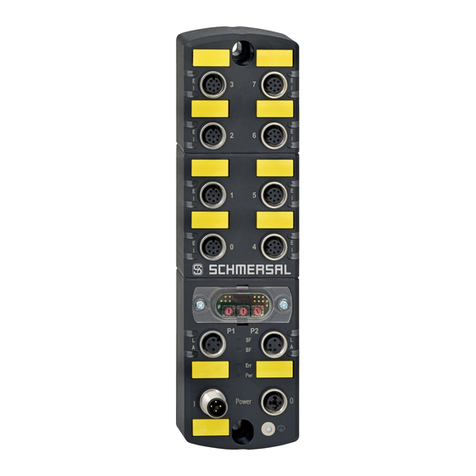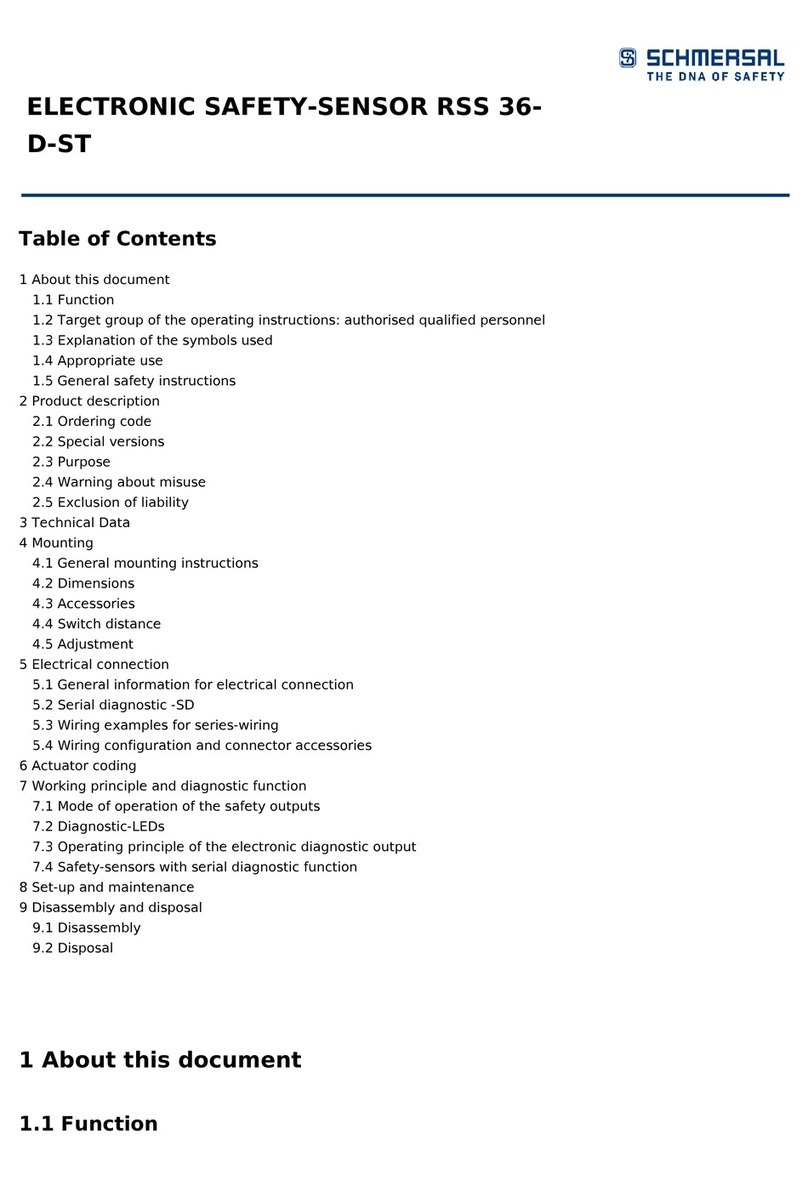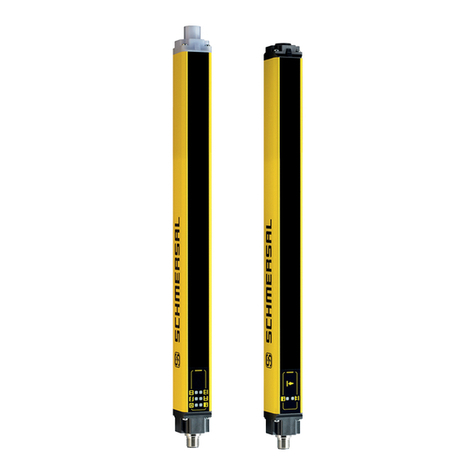
2
Operating instructions
Safety sensor CSS 8-180
EN
1.6 Warning about misuse
In case of improper use or manipulation of the safety switch-
gear, personal hazards or damages to machinery or plant
components cannot be excluded when safety switchgear is
used. The relevant requirements of the standard ISO 14119
must be observed.
1.7 Exclusion of liability
We shall accept no liability for damages and malfunctions resulting from
defective mounting or failure to comply with this operating instructions
manual. The manufacturer shall accept no liability for damages
resulting from the use of unauthorised spare parts or accessories.
For safety reasons, invasive work on the device as well as arbitrary
repairs, conversions and modifications to the device are strictly
forbidden; the manufacturer shall accept no liability for damages
resulting from such invasive work, arbitrary repairs, conversions and/or
modifications to the device.
2. Product description
2.1 Ordering code
This operating instructions manual applies to the following types:
CSS 8-180-
➀
-
➁
-
➂
No. Option Description
➀
2P 2 p-type safety outputs
2P+D 2 p-type safety outputs and
1 p-type signalling contact (diagnostics)
➁
E Terminal or individual sensor
Y Sensor for series-wiring
M Multifunctional connection
➂
L Connecting cable
LST Connecting cable with connector M12
ST Integrated connector M12
(only CSS 8-180-2P+D-M-ST)
2.2 Special versions
For special versions, which are not listed in the order code below 2.1,
these specifications apply accordingly, provided that they correspond to
the standard version.
2.3 Comprehensive quality insurance to 2006/42/EC
Schmersal is a certified company to appendix X of the Machinery
Directive. As a result, Schmersal is entitled to autonomously conduct
the conformity assessment procedure for the products listed in
Appendix IV of the MD without involving a notified body. The EC
prototype test certificates are available upon request or can be
downloaded from the Internet at www.schmersal.com.
The safety switchgears are classified according to
ISO 14119 as type 4 interlocking devices.
2.4 Destination and use
The non-contact, electronic CSS 8-180 safety sensor (hereafter called
safety sensor) is designed for application in safety circuits and is used
for monitoring the position of movable safety guards. In this application,
the safety sensor monitors the position of hinged, sliding or removable
safety guards by means of the coded electronic CST 180-1 or
CST 180-2 actuators.
Mode of operation of the safety outputs
The opening of a safety guard, i.e. the actuator is removed out of the
active zone of the safety sensor, will immediately disable the safety
outputs (also refer to Switching distance of the safety sensor).
Faults which no longer guarantee the functioning of the safety sensor
(internal fault,) will also disable the safety outputs immediately. Any
error that does not immediately affect the safe functioning of the safety
sensor (e.g. the ambient temperature too high, interference potential
at a safety output, cross-wire short) will lead to a delayed shut-down.
In this situation, the diagnostic output will be switched off after approx.
10 seconds. The safety outputs are disabled when the fault is active
for 1 minute. This signal combination, diagnostic output disabled and
safety outputs still enabled, can be used to shut down the machine in
a controlled manner. After fault rectification, the error message is reset
by opening and re-closing the corresponding safety guard. The safety
outputs will switch, thus enabling the machine. For the release, the chain
of sensors must be permanently actuated.
A cross-wire short at the safety outputs of a sensor chain will
load the sensor from the place where the fault is located up
to the end of the chain. The fault therefore can be signalled
by multiple sensors. Starting from the safety-monitoring
module, the cross-wire short is located before the first sensor
signalling the fault.
Series-wiring
Max. 16 sensors can be wired in series. A 200 m long sensor chain can
be set up. Wiring examples for series-wiring, refer to appendix
The user must evaluate and design the safety chain in
accordance with the relevant standards and the required
safety level.
If multiple safety sensors are involved in the same safety
function, the PFH values of the individual components
must be added.
The entire concept of the control system, in which the
safety component is integrated, must be validated to the
relevant standards.
2.5 Technical data
Standards: IEC 60947-5-3, ISO 13849-1, IEC 61508
Enclosure: glass-fibre reinforced thermoplastic
Operating principle: inductive
Actuator: CST 180-1, CST 180-2
Coding level according to ISO 14119: low
Switching distances to IEC 60947-5-3:
Rated switching distance Sn:8 mm
Assured switching distance sao: 7 mm
Assured switch-off distance sar: 10 mm
Hysteresis:
Repeat accuracy R:
Termination: Cable or cable with connector M12
or integrated connector M12
Cable section: Version-dependent: 4 x 0.5 mm²,
5 x 0.34 mm², 7 x 0.25 mm²
Series-wiring: max. 16 components
Cable length: max. 200 m (cable length and
cable section alter the voltage drop
depending on the output current)
